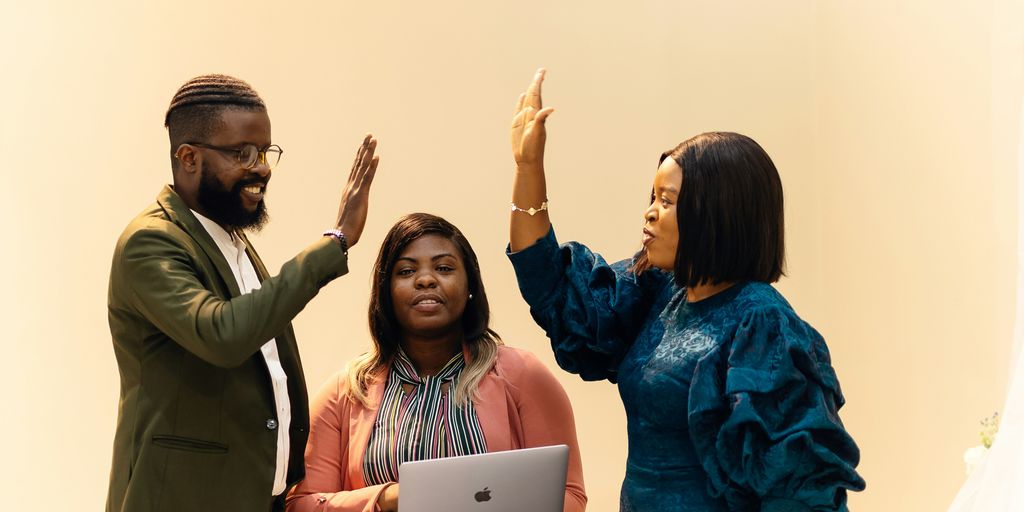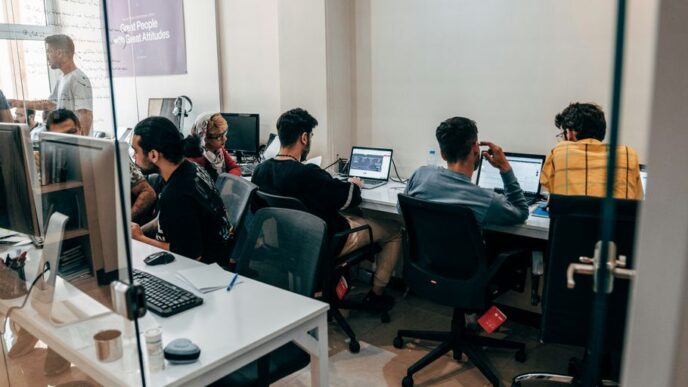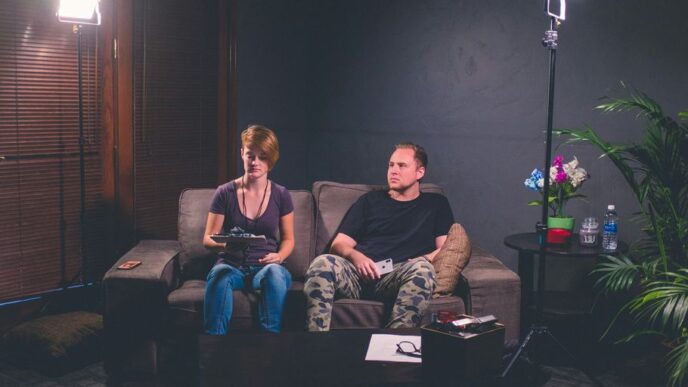So, you’ve made it to the second interview. That’s great news! It means they liked you the first time around. But now, it’s time to really show them why you’re the best person for the job. This next step can feel a bit more intense, maybe even a little intimidating. You’re probably wondering what’s different this time and how to make sure you leave an even better impression. Don’t worry, we’ve got you covered with some solid second interview tips to help you nail it.
Key Takeaways
- Go beyond basic skills; show how you fit the company culture and team.
- Dig deeper into the company’s recent news, competitors, and core values.
- Prepare detailed examples using the STAR method for behavioral questions.
- Ask thoughtful questions that show you’ve done your homework and are genuinely interested.
- Address any lingering concerns and discuss salary expectations clearly.
Understanding the Second Interview Landscape
So, you’ve landed a second interview. That’s great news! It means the company sees something they like in you, and they want to know more. Think of it as moving from the ‘getting to know you’ phase to the ‘are we a good match?’ stage. Unlike the first interview, which often focuses on your basic qualifications and whether you can do the job, the second round usually digs a bit deeper. You might meet with different people, maybe the hiring manager directly, or even potential teammates. They’re not just checking your skills anymore; they’re trying to figure out how you’ll fit into the team and the company’s overall vibe. It’s also a chance for you to get a better feel for them, too. You’ll likely be asked more specific questions about how you’d handle real-world situations related to the job. They want to see your problem-solving skills in action and how you’d approach challenges the team is currently facing. It’s less about what’s on your resume and more about how you’ll actually perform day-to-day. Remember, they wouldn’t invite you back if they weren’t seriously considering you, so use this opportunity to build on that initial positive impression. You might even get a chance to see the office space, which can give you a feel for the daily work environment. Just be sure to be polite and observant if you do get a workplace tour [fcba].
Here’s a quick rundown of what typically shifts:
- Meeting new faces: Expect to talk with people higher up or those you’d work with directly.
- Deeper questions: Get ready for more detailed questions about your past experiences and how you’d handle future scenarios.
- Culture fit: Interviewers will be assessing how well you align with the team and company values.
- Your turn to ask: This is also your prime time to ask more specific questions about the role and company.
Deepening Your Company Research

So, you’ve made it to the second interview. That’s great! Now, it’s time to really show them you’ve done your homework. This isn’t just about knowing what the company does, but understanding its pulse, its direction, and where it’s headed. Think of it as going from being a casual observer to someone who could actually contribute to their journey.
Exploring Recent Developments and News
This is where you go beyond the ‘About Us’ page. What’s been happening with the company lately? Have they launched a new product, announced a partnership, or maybe faced a public challenge? Checking recent press releases, news articles, and even their social media can give you a lot of material. For instance, if they just announced a big expansion into a new market, you can talk about how your skills might be useful in that specific context. It shows you’re not just interested in the job, but in the company’s current activities and future plans. It’s a good idea to look at their investor relations section if they have one, as that often has the latest official updates. You can find out about their recent performance and future outlook on sites like Yahoo Finance.
Understanding Competitors and Industry Trends
Knowing who the company’s rivals are and what’s happening in their industry is super important. Are there new technologies emerging? Are customer preferences shifting? Understanding these bigger picture items helps you see where the company fits in and what challenges or opportunities it might face. You can talk about how you’ve kept up with industry changes in past roles or how you see the company positioning itself against competitors. This shows you’re thinking strategically, not just about your own tasks.
Identifying Company Values and Mission
Every company has a mission statement and core values, right? But what do they really mean in practice? Look for examples of how the company lives these values. Do they talk about community involvement? Do their employees seem to genuinely support the company’s goals? You can often get a feel for this by reading employee reviews on sites like Glassdoor or by looking at their corporate social responsibility reports. Mentioning how your own values align with theirs can make a big difference. It’s about showing you want to be part of something you believe in, not just collecting a paycheck.
Mastering In-Depth Interview Questions

So, you’ve made it to the second interview. That’s great! Now, the questions tend to get a bit more specific, digging deeper into how you actually work and think. They’re not just checking if you can do the job anymore; they’re trying to figure out if you’ll fit in and how you’ll handle real-world challenges.
Preparing STAR Method Responses
Remember the STAR method? Situation, Task, Action, Result. It’s your best friend for behavioral questions. Since you’ve already had a first interview, try to come up with new examples that showcase different skills or experiences. Don’t repeat stories you’ve already told. Think about times you had to make tough calls, manage a project, or deal with a difficult situation. The goal is to show them you can handle whatever comes your way. For instance, if they ask about a time you failed, don’t just say you messed up. Explain the situation, what you were supposed to do, what actions you took, and what the outcome was, but also what you learned from it. It shows self-awareness and a willingness to grow. You can find some great examples of how to structure these answers when you prepare for your second interview.
Showcasing Problem-Solving Abilities
Expect questions that put you on the spot, like "Our team is facing X problem, how would you solve it?" or "Tell me about a time you had to make a difficult decision quickly." This is where you get to show off your critical thinking. Do your homework on the team’s current projects or challenges. Then, offer concrete, actionable ideas. It’s not just about having a solution; it’s about how you get there. Talk through your thought process. What factors did you consider? What were the potential risks and benefits? Being able to articulate how you approach problems is just as important as the solution itself.
Articulating Strengths and Weaknesses Effectively
They’ll likely ask about your strengths and weaknesses again, but this time, they might want more detail or different examples. For strengths, pick ones directly relevant to the role and back them up with specific achievements. When it comes to weaknesses, be honest but strategic. Choose something real that you’ve actively worked on improving. For example, you might say, "I used to struggle with taking on too many tasks at once, which sometimes led to feeling overwhelmed. To manage this, I’ve implemented a strict prioritization system using a digital planner and learned to delegate when appropriate. This has really helped me stay on track and deliver results more consistently."
Demonstrating Enthusiasm and Engagement
So, you’ve made it to the second interview. That’s great! Now, it’s time to really show them you’re not just qualified, but that you’re genuinely excited about this specific opportunity. Think of it as building on that first impression, but with more depth. You want to come across as someone who’s not just looking for a job, but this job.
Active Listening and Thoughtful Questions
This is where you really get to shine. When the interviewer is talking, really listen. Don’t just wait for your turn to speak. Nod, make eye contact (if it’s a video call, look at the camera!), and try to connect what they’re saying to your own experiences. When you ask questions, make them count. Instead of asking something you could easily find on their website, ask something that shows you’ve been thinking critically about the role and the company. For instance, you could ask about how the team handles unexpected project changes or what a typical day looks like for someone in this position. Asking good questions shows you’re engaged and thinking ahead. It’s a chance to really get a feel for the team and see if it’s a good fit for you, too. Preparing thoughtful questions that reflect your research on the company is key.
Sharing Relevant Experiences and Ideas
This is your chance to go beyond the resume. Think about specific examples from your past that directly relate to what they’re looking for. Use the STAR method (Situation, Task, Action, Result) to structure your answers. It helps keep things clear and impactful. For example, if they mentioned a challenge the team is facing, share a time you successfully tackled a similar problem. Don’t just say you’re a team player; tell a story about a time you collaborated effectively to achieve a goal. It’s about showing, not just telling. You want to get across to the hiring manager that you not only have the right skills and the right attitude for the job but also that you’re intrinsically motivated based on the trajectory of your career. Talk about what you can do for the company, not what the company can do for you.
Expressing Genuine Interest in the Role
This might sound obvious, but it’s super important. Make sure your enthusiasm comes through. You can do this by reiterating why you’re excited about this particular role and company. Maybe it’s the company’s mission, a specific project they’re working on, or the opportunity to learn new skills. Connect your personal career goals to what this job offers. For example, you could say something like, "I was really drawn to this role because of the opportunity to work on [specific project], which aligns perfectly with my interest in [your interest]." At the end of the interview, take a moment to thank the interviewers for their time and the opportunity to learn more about the company and the position. Express your continued interest in the role and emphasize your enthusiasm for the potential opportunity to contribute to the organization’s success. This is a great chance to really solidify your candidacy.
Asking Insightful Questions
So, you’ve made it to the second interview. That’s great! Now, it’s your turn to really dig in and see if this place is the right fit for you. Asking good questions shows you’re serious about the role and that you’ve done your homework. It’s not just about answering their questions anymore; it’s a two-way street. Think about what you really need to know to make a decision. What aspects of the job or company culture weren’t clear from the first chat? This is your chance to get those details.
Inquiring About Company Growth and Goals
It’s smart to ask about where the company is headed. You want to know if your work will contribute to something bigger. Try asking something like, "What are the company’s main goals for the next year, and how does this role contribute to achieving them?" or "Can you share some of the recent successes or challenges the company has faced, and how is the team adapting?" Understanding their direction helps you see if your own career path aligns with their vision. It also shows you’re thinking long-term. You can find out about recent company news to help inform your questions, which is a good way to show you’re engaged.
Understanding Team Dynamics and Culture
Beyond the official job description, the people you work with and the overall vibe of the office matter a lot. Ask about the team structure. For example, "What does a typical day look like for someone in this role?" or "How does the team typically collaborate on projects?" You might also ask about how feedback is given and received. "What’s the approach to professional development within the team?" can give you a sense of whether they support growth. Getting a feel for the team dynamics is key to knowing if you’ll fit in and be happy there.
Exploring Professional Development Opportunities
Everyone wants to grow in their career, right? So, asking about development is a no-brainer. You could ask, "What opportunities are there for learning new skills or taking on more responsibility?" or "Does the company offer any training programs or support for further education?" It’s also good to ask how performance is reviewed and what the path for advancement might look like. This shows you’re ambitious and looking to contribute long-term. Remember, asking thoughtful questions during an interview demonstrates your interest and engagement. Prepare a few questions beforehand to impress the employer and gain valuable insights into the role and company. Asking thoughtful questions can really make a difference.
Finalizing Your Candidacy
So, you’ve made it to the final stages. That’s great! Now, it’s all about wrapping things up and making sure you leave a strong final impression. This part is really about addressing any lingering questions the hiring team might have and clearly stating your interest.
Addressing Potential Hesitations
Sometimes, interviewers might have a few things they want to clarify before making a decision. This could be about your past experiences, why you’re looking to leave your current role, or even just a general check to see if you’re a good fit for the team. Be honest, but always keep your answers positive and focused on what you’re looking for in this new opportunity. For instance, instead of complaining about a past job, explain what you learned and how this new role aligns better with your career goals. It’s about showing you’ve thought about your career path and how this position fits into it. Remember, they want to see that you’re likely to stick around and grow with the company.
Discussing Salary Expectations
This is often a part of the final interview. It’s good to have a clear idea of what you expect, based on your research and experience. You can present this information in a range. For example:
| Factor | Consideration |
|---|---|
| Your Experience | 5+ years in similar roles |
| Market Rate | Based on industry research for this location |
| Role Responsibilities | Alignment with senior-level tasks |
Your salary expectation: $75,000 – $85,000 annually
Be prepared to justify your range, but also be open to discussion. It’s a negotiation, after all. You want to feel valued, and they want to make sure you fit within their budget. Thinking about your overall compensation package, including benefits, can also be helpful here.
Sending a Personalized Thank-You Note
Don’t forget this step! After the interview, send a thank-you note or email within 24 hours. This is your last chance to make a good impression before they decide. Keep it brief but specific. Mention something you discussed that particularly interested you or reiterate why you’re a great fit. It shows you’re attentive and genuinely interested in the job opportunity. A well-written thank-you note can really make a difference.
Wrapping Up Your Second Interview Journey
So, you’ve made it to the second interview. That’s a big deal! It means they see something they like. Now, it’s all about showing them you’re the right fit, not just skill-wise, but as a person they’ll want to work with every day. Remember to be yourself, ask good questions, and show them why you’re excited about this specific job. A little extra prep goes a long way. By putting in the effort now, you’re setting yourself up for success and getting one step closer to that dream job. Good luck out there!
Frequently Asked Questions
What’s different about a second interview compared to the first one?
The second interview is like a follow-up meeting. It’s a chance for the company to learn more about you, like how you’d fit in with the team and company culture, not just if you have the right skills. They might ask tougher questions or have you meet more people from the company.
How can I learn more about the company before the interview?
You should look up recent news about the company, what its competitors are doing, and what the industry is like. Also, try to understand what the company believes in and what its main goals are. This helps you ask better questions and show you’re really interested.
How should I answer questions about my past experiences and problem-solving skills?
Think about times you solved problems or handled tough situations at work. Use the STAR method: describe the Situation, the Task you had, the Action you took, and the Result. This helps you give clear, detailed answers.
How can I show I’m really interested and engaged during the interview?
Show that you’re excited about the job! Listen carefully when they talk, ask smart questions, and share your own ideas when it fits. Let them know why you really want this job and how you can help the company.
What kind of questions should I ask the interviewer?
Ask about the company’s future plans, what it’s like to work there with the team, and if there are chances to learn new things or get promoted. This shows you’re thinking about the long term and want to grow with the company.
What should I do after the second interview?
After the interview, send a thank-you note or email. Mention something specific you talked about and say again why you’re a good fit. This reminds them of you and shows you’re polite and still interested.














